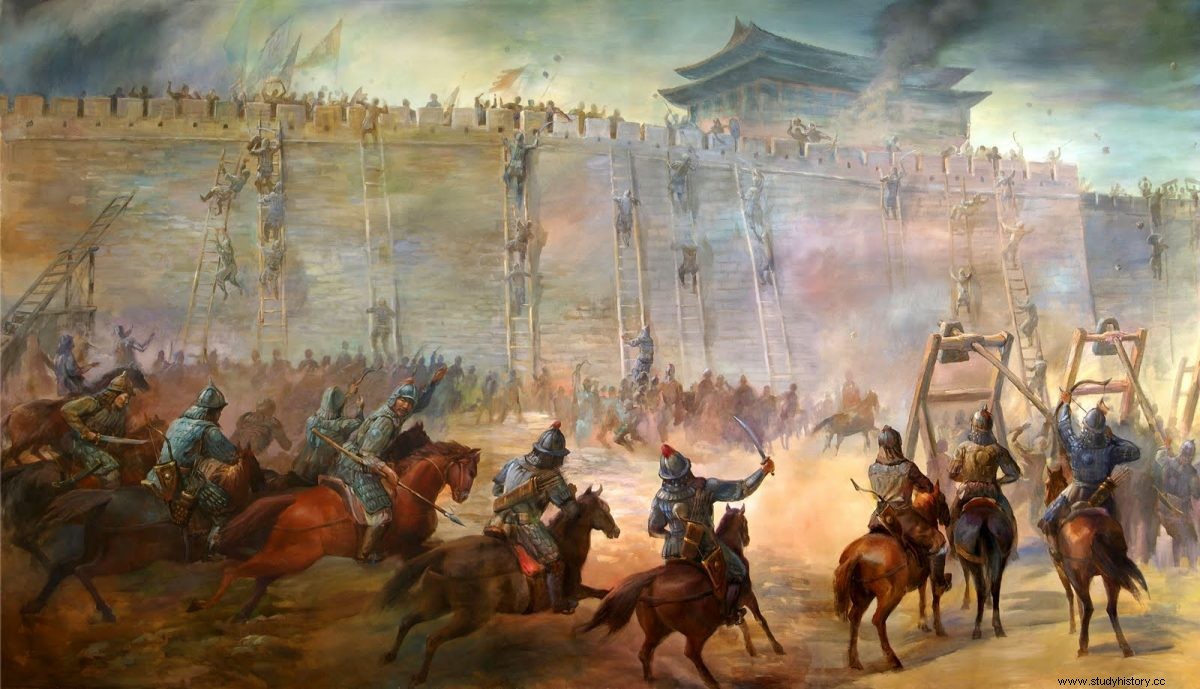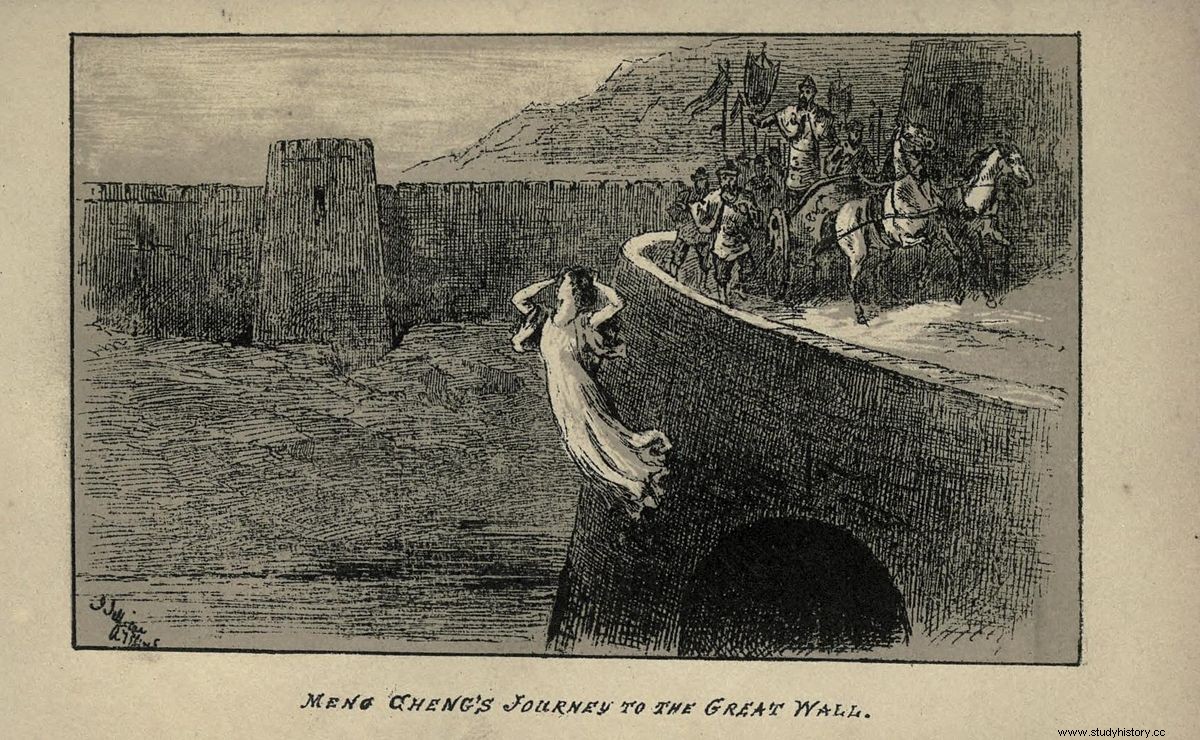At the end of the 19th century, the scientist J. Alexander He studied the nutrients and properties of spinach and in his annotations he stated that 100 gr. They contained 0.003 grams (3 milligrams) of iron. When his secretary transcribed the notes, he made a mistake by placing the comma and the study was published with the fact that they contained 0.03 grams (30 milligrams) of iron. Spinach consumption increased by 30% - logically, the growers were delighted. In 1930 a group of German scientists published a study denying these data and stating the transcription error. Apparently, there are lies, in this case errors, that have more lives than a cat because if you ask, people still believe that spinach is one of the foods that contains the most iron. Well, the same thing happens with the Great Wall of China, which is still believed to be the only man-made construction that can be seen from space and that it is also the largest cemetery in the world. And the truth is, neither one nor the other.

The custom of surrounding oneself with walls had existed in China for many centuries, when the current territory was nothing more than a handful of kingdoms fighting among themselves to achieve hegemony over the rest. Until in 221 B.C. Qin Shi Huang , the king of Qin and first emperor, managed to impose himself and unify all the territories under a single kingdom:China. All the inner walls that separated the different kingdoms were demolished, and the emperor ordered the connection between the pre-existing northern walls and the construction of other sections that would form a first continuous line, and that would be the precursor of the current Great Wall, although the largest part of this defensive barrier dates from the Ming dynasty (1368-1644). The Ming built a new Great Wall -more than 6,000 kilometers of new defensive sections- with more advanced characteristics than the previous ones -previously they were built using compacted earth as raw material and layers of reeds were interspersed to drain the water, and during the Ming dynasty a combination of stone at the base and brick elevation was used in most of the sections.
And who were they defending themselves from? From the nomads of the northern steppes. Since the time of Emperor Qin Shi Huang, relations with nomads have been determined by trade. The way of life of the nomads, based mainly on herding and hunting, required Chinese grain, textiles or tools. The Chinese, in turn, obtained fur and, above all, horses. As long as trade flowed, relations were friendly, but from time to time, depending on the ambition of their neighbors to the north and the cohesion between the different tribes, they raided China, razed everything they could and returned to the steppe with the loot. So that the barbarians would have their needs met through trade and not through plunder, the Chinese applied three measures to placate the warlike nomads:a policy of gifts, especially in the form of large rolls of silk, the Heqin , delivery of imperial princesses in marriage with the chiefs of the tribes, and the construction of a defensive wall to prevent incursions that, in addition, delimited the civilized world - China comes to mean "the center of the world" - from the barbarian. These policies were not exclusive, and each emperor, depending on the moment and the circumstances, applied one or the other or all three directly.
Is it seen from space? Well no. The Great Wall of China is not visible from space, at least to the human eye, and much less from the Moon – NASA itself denies it on its website. Even the first Chinese astronaut in history, Yang Liwe , confirmed it in 2003…
The view from the capsule was extraordinary, but I never got to see the Great Wall.
And what about being the largest cemetery in the world? Well, neither. Qualified workers (master builders, bricklayers, stonemasons, those from the brick factory...), and also prisoners of war and convicts whose sentence was to work on the wall, were employed to build this mega-construction. In addition, for the most serious crimes, if the convict died before serving all the years of his sentence, one of his relatives had to serve for him. But the largest labor force was made up of soldiers and peasants who, understanding that they had to sacrifice themselves for a work that benefited everyone, volunteered to work when their obligations allowed - let's say that this "willingness" had a lot to do with the orders of the emperors on duty. It is difficult to quantify the mortality of this workforce, halfway between professional, slave and volunteer, but what is clear is that their bodies were not buried inside the wall for a simple matter of logic:the structure would weaken when the bodies decompose and, furthermore, by creating a hole inside, they would be feasible points of possible rupture and collapse.
So, where was this legend born? It has to do with Meng Jiangnu's tear tale. , which is part of Chinese folklore and history. Legend has it that in the time of Emperor Qin Shi Huang, imperial officials roamed the villages recruiting laborers to work on the Great Wall. Given the lack of volunteers, since they had to abandon their lands and their families, they began to take them away by force. And that they did with Fan Xiliang , a young peasant who had just married his beloved Meng Jiangnu . After a year of anguish, tears and worry at not hearing from her husband, Meng Jiangnu decided to go looking for her. She undertook a long and arduous journey, and despite hunger, fatigue and cold she managed to reach the Great Wall. She asked all the workers she met about her husband, until she arrived at the area where she had worked. There she was told that she had died just over a month ago as a result of exhaustion and the harsh working conditions. Her remains lay on the wall. Meng Jiangnu wept uncontrollably for three days and three nights, and her crying was so heartrending that it caused a section of the wall to collapse. In the rubble she discovered the remains of Fan Xiliang and Meng Jiangnu was able to see her husband one last time. The emperor, enraged by the collapse of the wall, ordered to execute her, until he saw her in person. The beauty of the young woman captivated the emperor and he wanted to make her his concubine. At first she refused, but after careful consideration she agreed on the condition that Fan Xiliang be buried and a mausoleum be built over her grave. In addition, the emperor himself had to attend the funeral. Once all the requests were fulfilled and when the emperor went to collect her reward, she Meng Jiangnu threw herself into the sea and disappeared forever. They say that she met with her beloved.

If we ignore the message or the moral of this story, it is easy to extrapolate and conclude that the workers dead were buried in the wall and, therefore, that it was a gigantic cemetery. And hence, many have elevated this story to the category of historical source to justify this fact for which, to date, there is no scientific evidence. The moral of this story, despite having the script of a love story, is that the Great Wall is a symbol of despotism and cruelty. And I would like to believe that it is also a tribute to all those selfless anonymous workers, uprooted from their homes and separated from their families.
